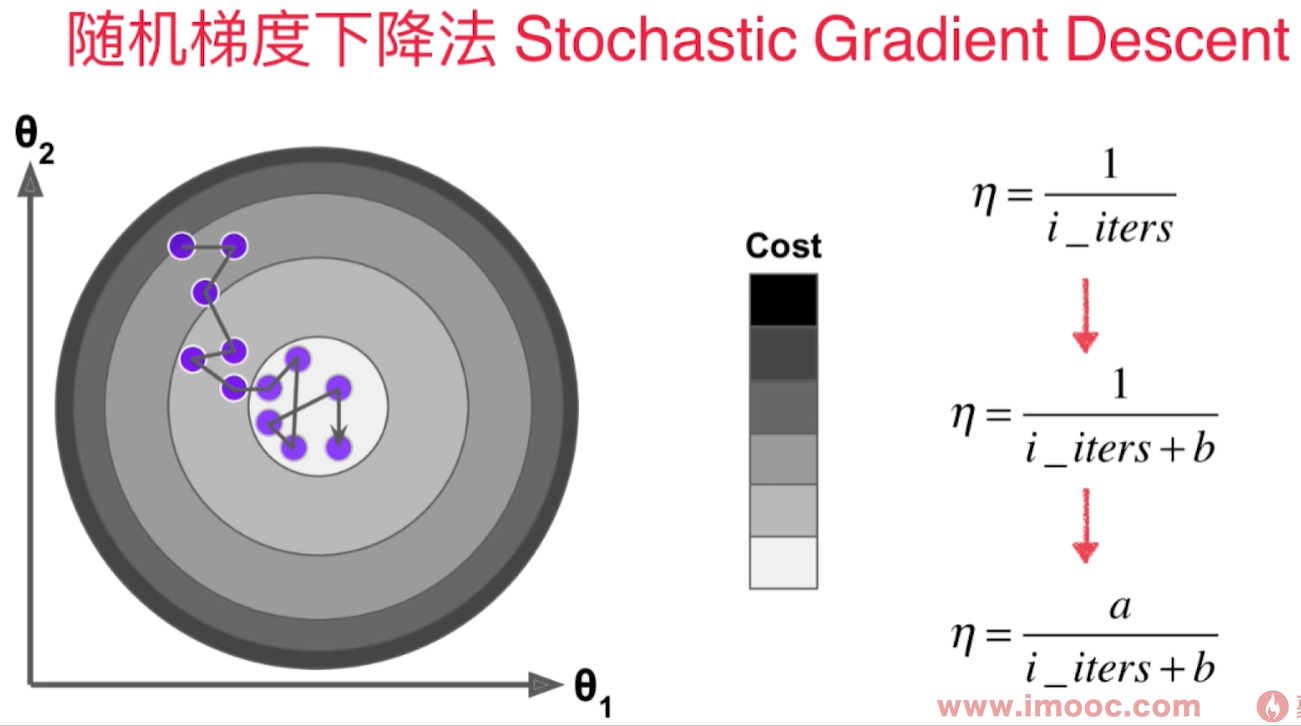随机梯度下降法 Stochastic Gradient Descent(SGD)
每次只取出第i个样本进行计算,得到的值决定了下一次的搜索方向,有可能往梯度增大的方向前进,但是总的来说会逼近最小值。尤其是当样本数m值很大时,我们愿意用精度换取时间。
为了避免我们已经到loss function的最小值附近,但是因为学习率过大,导致又跳出了最小值附近,我们希望学习率是逐渐递减的。 而这个逐渐递减的过程借用了搜索领域著名的模拟退火思想。 既在冶金的过程中,钢铁的温度是从高到低冷却的!冷却的函数是和时间t相关的。


用$1/3$的样本就可以得到较精确的结果:
import numpy as np
import matplotlib.pyplot as plt
m = 100000
x = np.random.normal(size=m)
X = x.reshape(-1, 1)
y = 4.*x + 3.+np.random.normal(0, 3, size=m)
def dJ_sgd(theta, X_b_i, y_i):
return X_b_i.T.dot(X_b_i.dot(theta) - y_i) * 2.
def J(theta, X_b, y):
try:
return np.sum((X_b.dot(theta) - y) ** 2) / len(X_b)
except:
return float('inf')
def sgd(X_b, y, theta, n_iters):
t0 = 5
t1 = 50
def learning_rate(t):
return t0/(t + t1)
for cur_iter in range(n_iters):
rand_i = np.random.randint(len(X_b))
gradient = dJ_sgd(theta, X_b[rand_i], y[rand_i])
theta = theta - learning_rate(cur_iter) * gradient
return theta
%%time
X_b = np.hstack([np.ones((len(X), 1)), X])
initial_theta = np.zeros(X_b.shape[1])
theta = sgd(X_b, y, initial_theta, len(X)//3)
theta
结果:
CPU times: total: 219 ms
Wall time: 368 ms
array([2.94080133, 4.02817242])